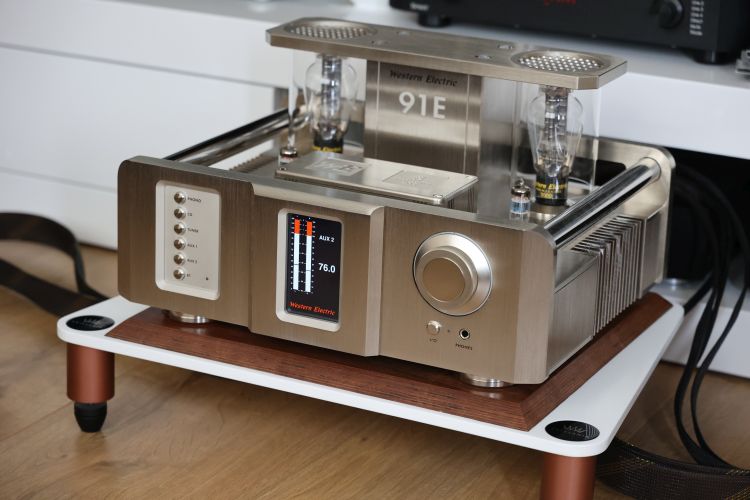
The 91E’s volume control is something special. A stepped logarithmic attenuator is used to mimic the response of human hearing. The attenuator consists of only discrete resistors in a ladder configuration that are switched in and out of the circuit to produce a logarithmic attenuation of the output signal. Unlike common potentiometer designs where 9 o’clock sounds loud and 12 o’clock yields pretty much the maximum volume level, the 91E’s logarithmic volume control feels linear in use. With the Care Orchestra Celestial Deep Breath Evo, for instance, I found that the optimum volume level was often at a setting of 88-90.
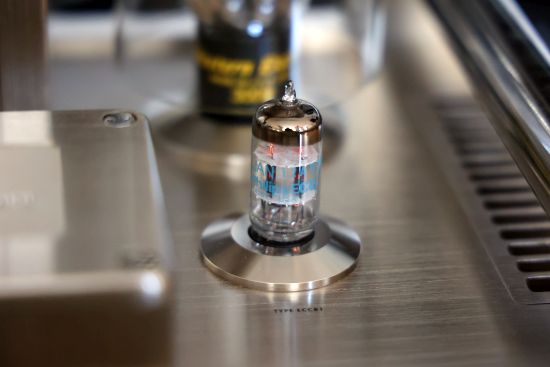
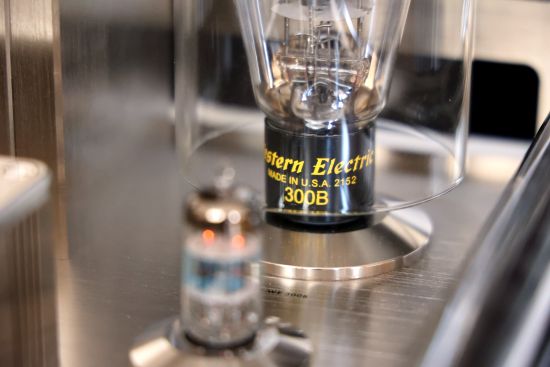
Included is a solid, milled-from-aluminum infrared remote control that allows for quick adjustment of amplifier settings such as input levels, balance, and display dimming.
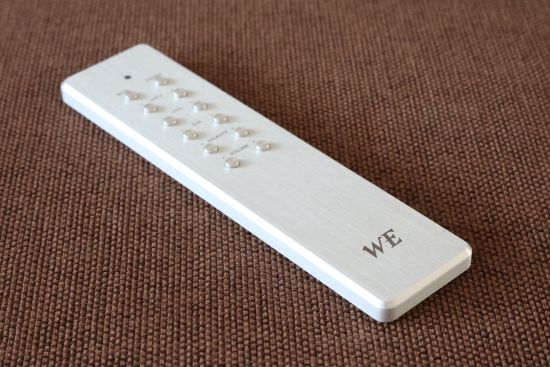
The front panel is graced with a beautiful and easy-to-read fully dimmable LCD display that shows the selected input, attenuator level, and a VU meter. The display also shows settings that can be adjusted by the included remote control.
Around the back, there are 6 analog audio inputs and a Bluetooth antenna. The amplifier supports Bluetooth v4.2 with BC, MP3, AAC, FastStream, and APTX codecs up to 16 bit 96kHz. Besides a single set of speaker terminals, there are also Ethernet and USB Connections, but alas, these are implemented solely for the purpose of software & firmware updates.
With a weight of 22 kgs and made entirely of machined aluminum, the amplifier is built very solidly but thanks to the handy crossbars on the sides, it can still be carried and maneuvered quite easily.
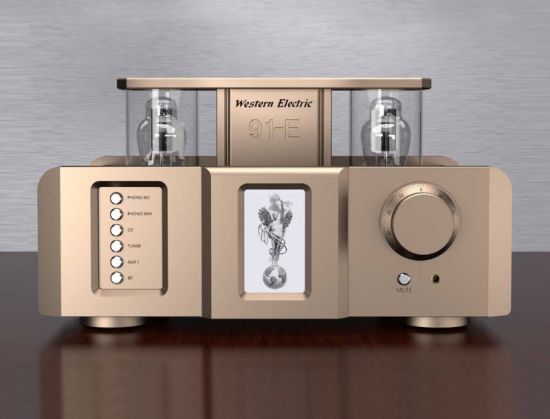
My review unit is in Nickel but the 91E amplifier is also available in Gold and Black.
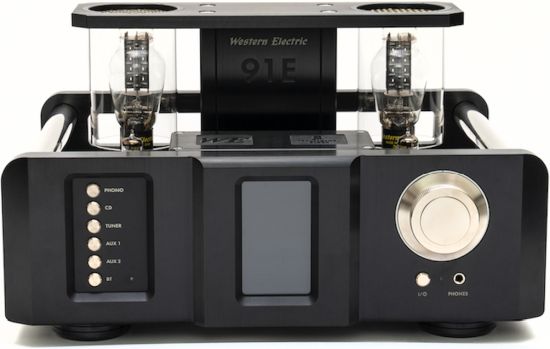
Auto Switch-Off
I don’t usually have music playing continuously and tend to stop and start sessions divided over the day. Due to this, the 30-minute auto-shut-off made it hard to assess the amplifier’s long-term evolution of its sonic presentation. Every time I stepped away to work on the review, at some point, I heard “click” and the amp was off again. And it’s not advisable to switch on a tube amplifier right after it has been switched down. Presumably, this was not WE’s decision but invoked by EU law. Usually, this feature can be switched off but at the time of writing, I am not aware of the method for this for the 91E.
In any event, this may be moot anyway because, throughout my sessions, I noted that the amplifier sounds great right from the very first minute after being switched on. The main aspect that I found to change as the listening proceeded is that the music gains fluidity and flow. But unlike many other tube amplifiers, there is never any lack of focus or solidity with the 91E, the amp simply always sounds fully alive from the get-go.
Next: Listening
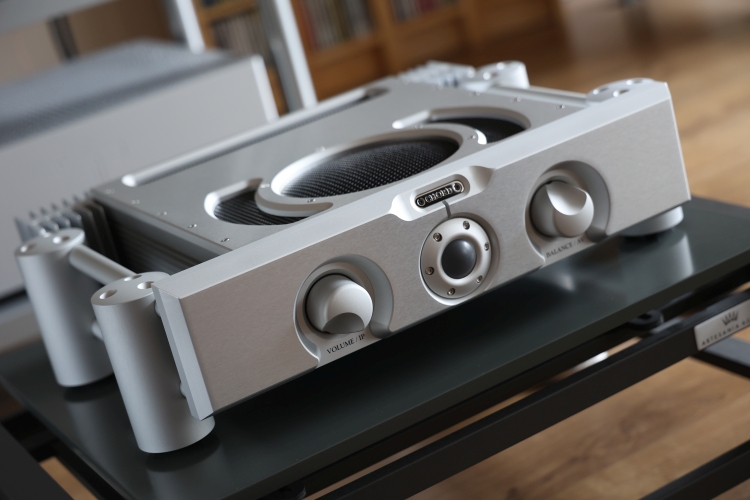
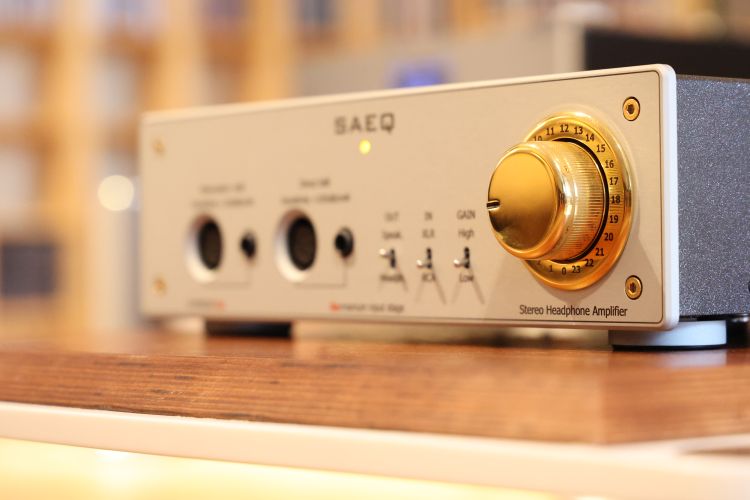
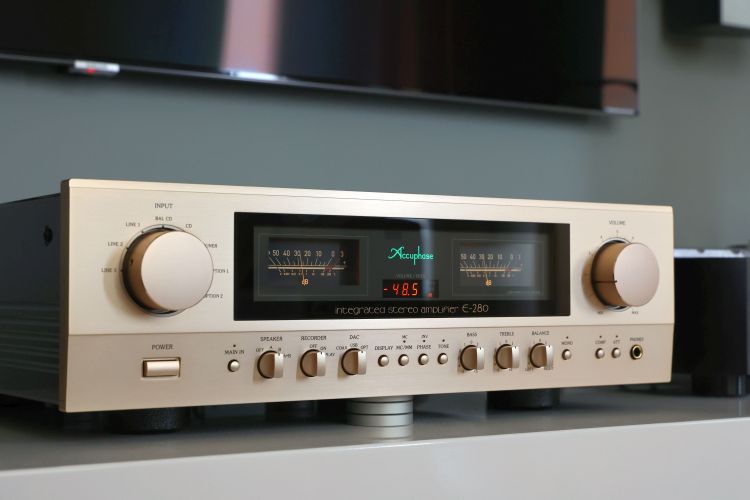
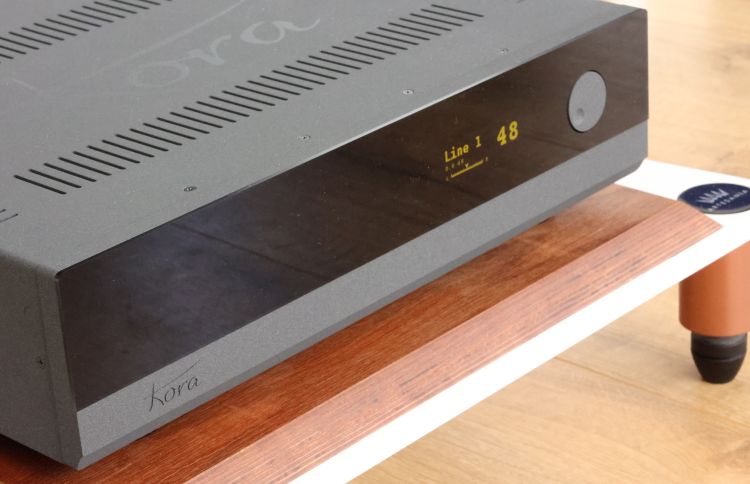
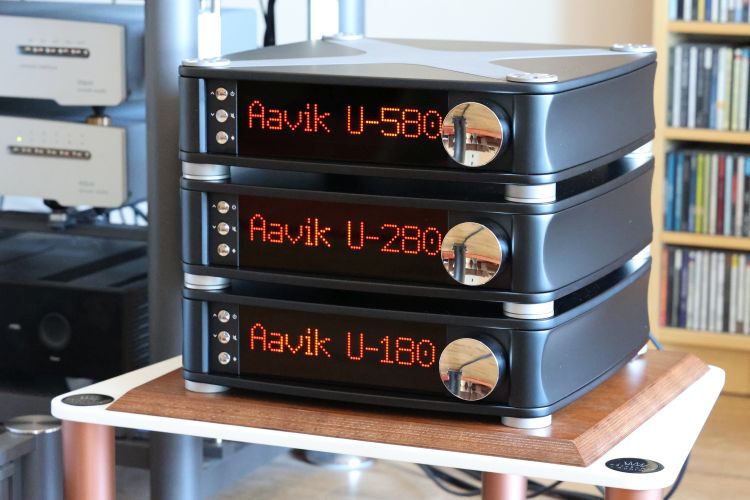
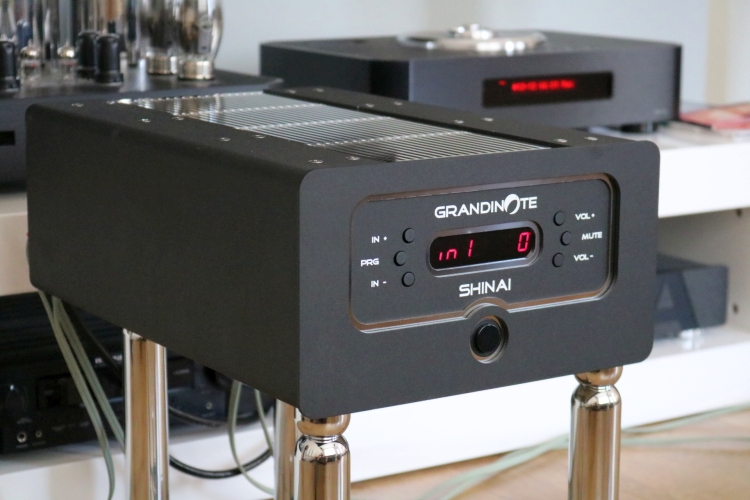
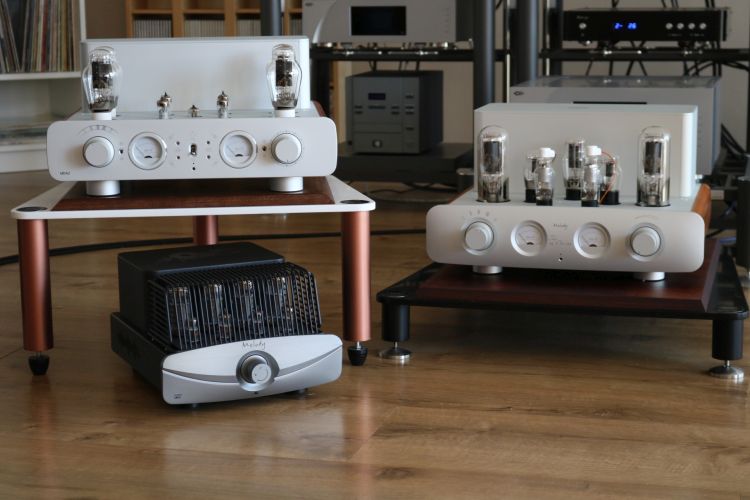
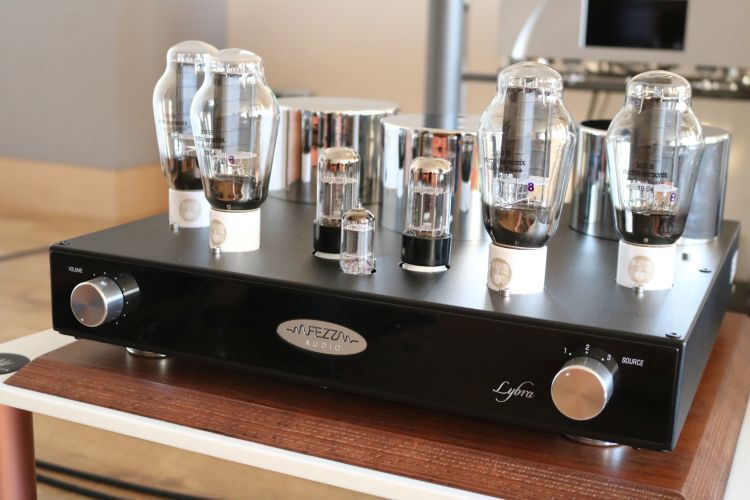
Nice to see a Weco product designed with beauty and technical precision again. I am over 65 and worked in telecom and radio for many years when Western Electric was in its later stages of usefulness. So great to see them “back”.Detroiter.
Christian,
Thank you so much for reviewing a new production WE product! This is literally the first review I’ve seen so quite a coup for you I imagine. 😉 Gorgeous amp but the amp, technical description, and review leave me with several questions:
Wringing 20 wpc from a pair of 300B tubes as the old saying goes “there is no free lunch” what compromises are made, tube life perhaps, to achieve this?
The comments from Tube Hifi Imports indicate the amp doesn’t have 3 transformers, so assuming it has a pair of output transformers does it have no power tranny? And if so how is the amp powered?
It is Bluetooth enabled, so I assume the amp then has an onboard Dac? Was this tested?
Sorry for all the questions Christian! This being such a gorgeous amp and a WE product I just want to know everything about it. 😉
Cheers,
Jon
Hi Jon, as for no free lunch, and with respect to the tube life I guess only time will tell, but I will say that the tubes do not become very hot at all. I’d swear that the pair on the Manley preamp were hotter.
I’m not sure what you mean by “does not have 3 transformers”. As far as I can tell, the amp does have 2-channel output transformers (the 4-Ohm or 8-Ohm removable block) and certainly an input transformer (presumably the big block between the tubes). Why would it need a third transformer?
I don’t know precisely how it achieves the higher power rating. The people who explained it to me also didn’t know. I think WE just don’t want to unveil too much about this. What I can add is that the heatsinks on the sides remained 100% cool during my tests.
There will indeed have to be a DAC onboard but it’s only for BT use. You cannot connect any digital sources to it. I did not test the BT performance as the antenna was not in the box. However, I forgot to add that A Tube informed me that their people were impressed with the BT sound quality, sounding full, smooth, and musical, like the amplifier itself.
Christian,
Thanks for your reply. And sorry for the confusion this line from the importer was what I saw but I think I understand it now.
“Because this amplifier (as Mr. Punter noted) doesn’t have 3 bulky transformers like most tube amplifiers it is also relatively light at 23 kilos.”
I was reading that as not 3 transformers but obviously it refers to the the OPT being smaller as they don’t have multiple output taps for different impedances.
Thanks,
Jon
Aha, yes, that makes sense:-) Also, apart from the WE91E using single-taps, in generic, SET amps tend to use extraordinarily large output transformers, which WE can also avoid due to their special implementation.
Beautiful piece of equipment. I would like to see traditional meters rather than LED displays. I believe this keeps it true to the vintage design aesthetic. Perhaps this would have added cost and required a different front panel design.
Analog meters are likely more affordable to implement and I agree that analog meters look really cool on many amps but I really like the digital display on the WE91E as it also alludes to the modern internal circuitry (hybrid tube/transistor).
WE explains in their advertisement that the output power derives not only from the 300B, but also from a current source. This would be a solid state “slave” to the tube’s transconductance curve. This is not a new topology, but perhaps new in the sense that the outstanding nature of the amp’s output is defined by a fantastic tube, and the additional horsepower is derived from a solid-state circuit. WE explains away the need for separate output transformers in an attempt to minimize the interwinding capacitance, but I suspect it is a must in getting the correct ratio of DC voltage, i.e, none on the output of the amp, with each impedance selected. This is necessitated because of the current follower’s interaction with the 300B circuit. I’m not able to go to court with these ideas, but I seriously doubt that WE is in any way compromising the performance or longevity of the 300B. Thanks.
Please change the above words, “power transformer,” to “output transformer.” Thanks!
done:-)